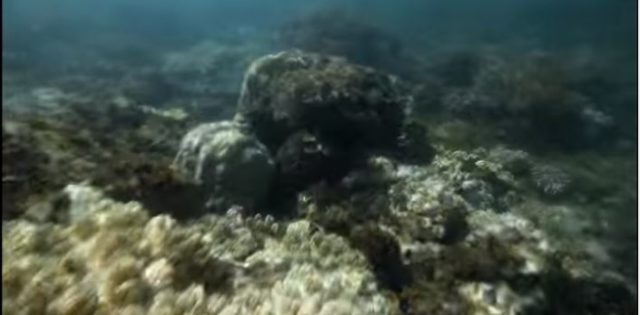A scuba diver was having the time of his life while he was cruising off the coast of Tanzania by helicopter. It was another beautiful day in Paradise as the scuba diver found something very unusual during a very low tide. It took three years to find the ruins again, but it looks like the diver’s patience paid off. The ruins have caused archaeologists to believe it is the famous merchant city known as Rhapta.
The ancient city was speculated to have been Africa’s first true metropolis and was well known in the tortoiseshell and metal weapons markets. The city flourished before its disappearance, becoming one of the wealthiest cities in the world during the time. The famous African city was mentioned in the Egyptian Ptolemy’s book “Geography,” which shows the city’s existence was known by Egypt as far back as 50AD. But suddenly, the city disappeared more than 1,600 years ago; vanished without a trace.

Rhapta’s fame and glory, accompanied by such a sudden disappearance, has left archaeologists scrambling to find the lost city for years. Scholars painfully tried to piece together the puzzle but couldn’t utilize the clues to unravel the location of what historians regretfully dubbed the “lost city” of Rhapta.
Thankfully, the observant scuba diver put an end to the wild chase to discover Africa’s first known metropolis. Archaeologists believe what was seen engulfed by the sea was really the ancient city of Rhapta, the thriving port city. It was documented as having thrived thousands of years ago and is speculated as being Africa’s first metropolis and trading partner of Egypt and Rome.
Sadly, since its disappearance over 1,500 years ago little is known about Rhapta’s culture, downfall, and eventual demise. For decades, the location of Rhapta had never been officially identified, but archaeologists have been honing in on the trade city’s location for years. There has been a good set of discoveries that lead to plausible candidate sites of Rhapta along and slightly off the beautiful coast of Tanzania.
Thankfully, scuba-diver Alan Sutton might have saved archaeologists decades of hard work and speculation by apparently diving into the wealthy ancient city while he was cruising in the helicopter.
The first time he spotted the city, he captured a photograph and then edited it so he could hone in on the discovery. After he had understood there was a significant find, he returned to the water to locate what he now understands to be a sunken city. For years, he made several unsuccessful attempts to locate the ruins due to the questionable clarity of the water in the area. Finally, with a bit of luck, Sutton managed to discover the African metropolis in a lower spring tide.

Once the ruins were located, the scuba diver uncovered a city way bigger than anything he was anticipating. He found himself looking at an incredibly large ring that was speculated to be the foundations for a big area. Throughout the perimeter of the foundations, there were thousands of blocks that had fallen off the foundations of the giant circle.
After prominent archaeologists had inspected the ancient site, they speculated this was the lost city that historians have been so eager to find. The architecture had some massive influence from Roman construction. This places the city’s age directly in the time frame when Rhapta was thriving as a metropolis, according to records across the world.
Now all scientists have to do is recover the artifacts that will confirm the great city as Africa’s first extremely wealthy metropolis, but that task can become complicated. The archaeologists must carefully dive, extract, and recover very fragile artifacts. Water makes for a tricky extraction, so patience is by far the biggest virtue. It looks like this excavation will take some time, but the artifacts will be well worth the wait.
These ancient ruins are still not proven to be Rhapta and will keep a team of archaeologists working hard for years to come. There is a strong indication that the city was built extremely well compared to the rest of the country’s ruins from the same era, suggesting a heavy foreign influence. Regardless of whether or not it really is Rhapta that has been located, archaeologists and historians have found a substantial city with signs of international trade. To the delight of the world, it seems yet another chapter of this wonderful world is ready to be written.
